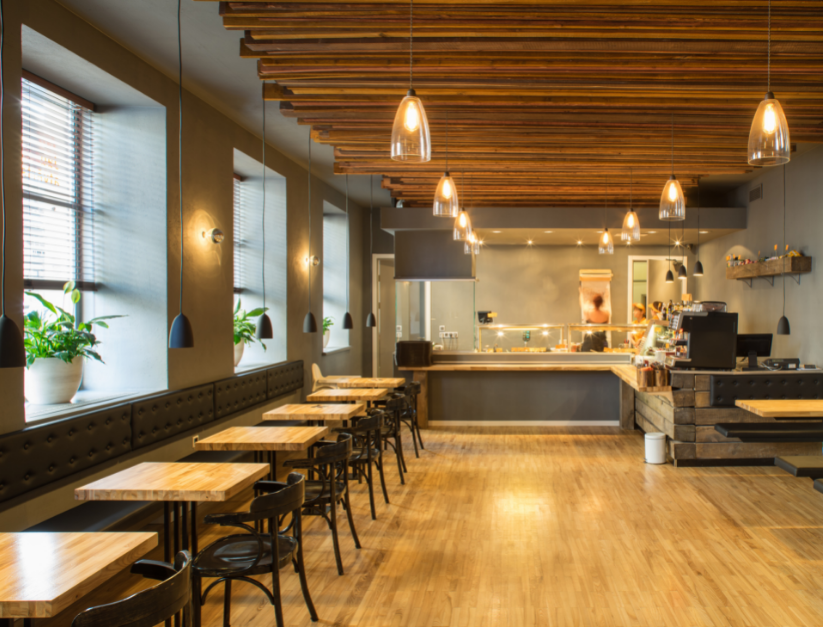.png?width=823&name=Blog%20Images_ROI%20Blog%20Post%20(1).png)
People are returning to restaurants, but the reality is that even with a (nearly) full room of tables, restaurants are still recovering from the pandemic’s financial ripple effect. At the same time, this transitional period for the restaurant industry owners/operators considering and implementing changes to respond to the post-pandemic preferences of restaurant customers. In some cases, these changes open up opportunities for long-term savings. Here are some approaches restaurant owners/operators can take to maximize the efficiency of their operations, save money and deliver on diner expectations.
Maximize Your POS System
If your POS system makes touchless payment and ordering easy, then you are in good shape for the post-pandemic restaurant experience. A survey of 21,000 diners conducted by reservations app OpenTable and the James Beard Foundation shows that 71% of customers want restaurants to continue offering contactless options for payment, ordering and menus.
Take a look at other features your POS system offers and consider if you are using it to its fullest capacity. For example, as you restaff, analyzing your orders, from your most popular dishes to your highest traffic days and hours, can help you prepare your labor schedule and determine what skill sets you need most in new employees. The savings you generate from tracking inventory and ordering trends, stocking appropriately, and improving communication between the wait staff and the kitchen are just some of the returns you can get from maximizing your POS system’s capabilities. If you are considering a new POS system, this article gives an overview of some of the top-rated.
Focus on Energy Savings
Compared to other commercial operations like offices and retail stores, restaurants use five to seven times for energy per square foot, according to the U.S. Environmental Protection Agency. Using appliances and other equipment that offer energy savings, like those that are ENERGY STAR-certified can save a restaurant owner/operator thousands of dollars. For instance, an ENERGY STAR-certified freezer can save up to $4,300 over its lifetime. And this is just one appliance. There are many others — from refrigerators to ovens to HVAC units — that offer significant reduction in expenses.
One area where high-efficiency equipment can make a big difference is in water usage. Similar to the ENERGY STAR program, the U.S. Environmental Protection Agency certifies products that meet efficiency criteria for water usage with the WaterSense label. For example, a WaterSense-certified pre-rinse spray valve (PRSV) can save up to 7,000 gallons of water per year, which is equivalent to 5,000 racks of dishes. The $115 it saves per year in water, sewer and natural gas costs means that a WaterSense PRVS pays for itself in about eight months. All Chicago Faucet PRSVs are WaterSense-certified and offer some of the highest levels of efficiency in the industry.
Touchless faucets in restrooms not only help conserve water, they also contribute to the low-touch experience diners are looking for, especially in a part of the restaurant where cleanliness is key. Chicago Faucets offers several lines of touchless commercial faucets, including the EQ® Series which can be programmed from a smart phone.
Energy savings doesn’t just impact a restaurant’s bottom line; it also aligns with what matters to diners. According to the OpenTable Diner Insights survey, fifty-two percent want restaurants to implement environmentally friendly practices. If you do upgrade your restaurant with energy-saving equipment, this might be something to consider sharing with customers on your website or through social media.
Reconsider Your Space

The average restaurant owner/operator has probably reconfigured their space to address needs for more carry-out and delivery pick-up, fewer diners and increased space between tables, not to mention a move toward outdoor seating and placement near open windows. Experts predict the post-pandemic restaurant, even after capacity limits return to higher levels, will not be configured as it was pre-pandemic.
To facilitate outdoor dining, restaurant owners/operators may want to consider rearranging the dining area to create an improved indoor-outdoor dining set-up, such as adding French or sliding doors to an exterior wall adjacent to an outdoor seating area. An exterior window with an awning could serve as a place for carry-out orders or a transition point for delivery services.
With the continued need for ample space between tables and separation for carry-out and delivery pick-up areas, one result is that the kitchen may get smaller, creating need for smaller fixtures and appliances. Many of them offer the same functionality as larger equipment due to advancements in design and technology. For example, the Mini Pre-Rinse Spray Valve from Chicago Faucets offers the same level of performance, durability and water savings as our standard-sized PRSVs, but the compact profile fits into smaller kitchen footprints. And like all Chicago Faucet products, the Mini Pre-Rinse Spray Valve can be easily updated and customized, making it possible to switch in other spouts, outlets, cartridges and handles.
Even if the restaurant industry returns to pre-pandemic levels of profits, the neither the balance sheet nor the restaurant itself is likely look the same. But, the permanent shifts in diner habits and preferences, as well as owners and operators observations about their restaurants, could result in changes that are healthy for customers and employees, as well as for the business overall.
.png)

